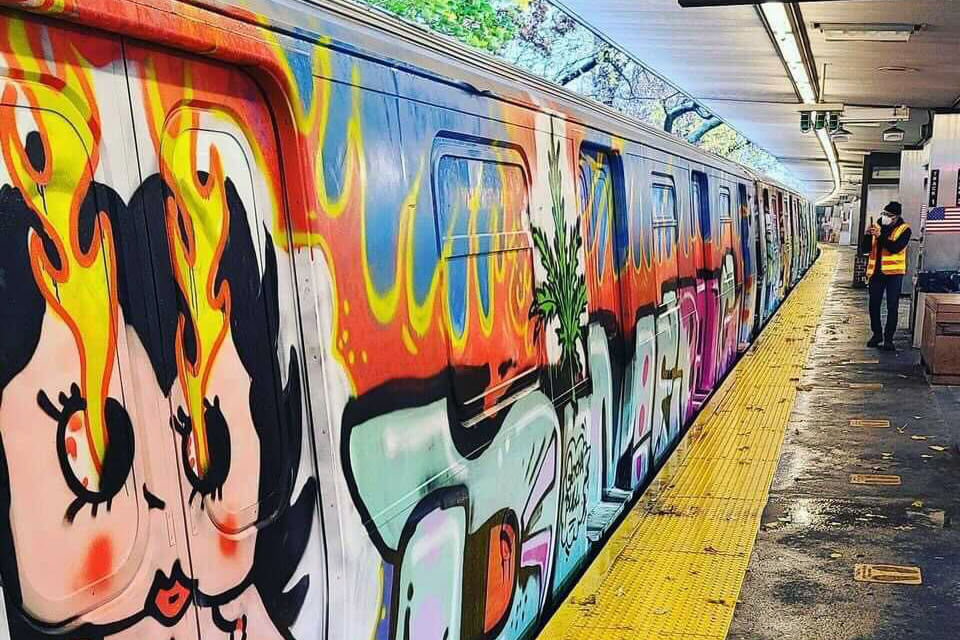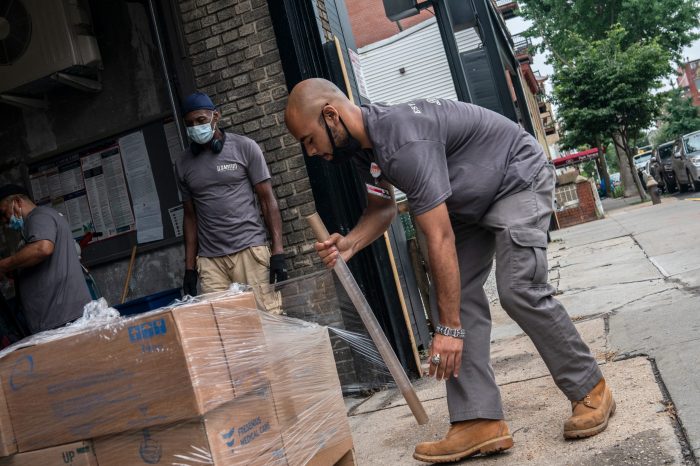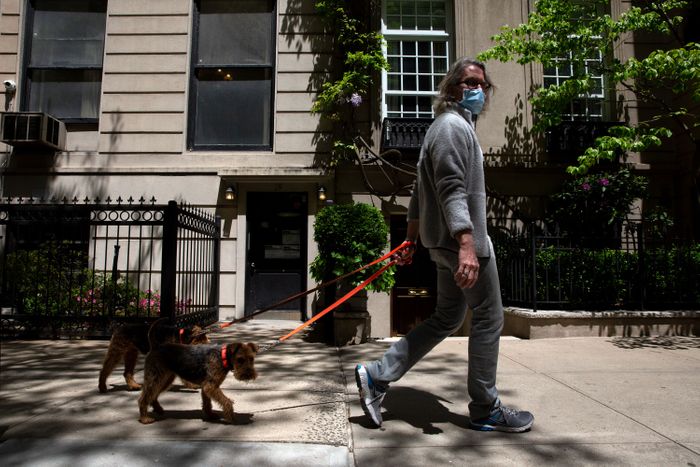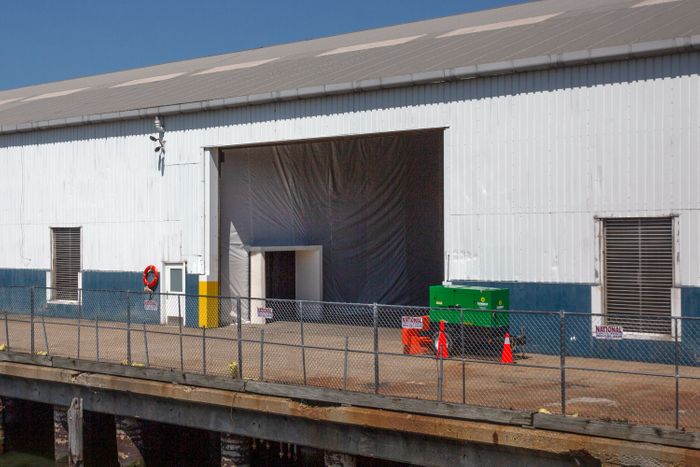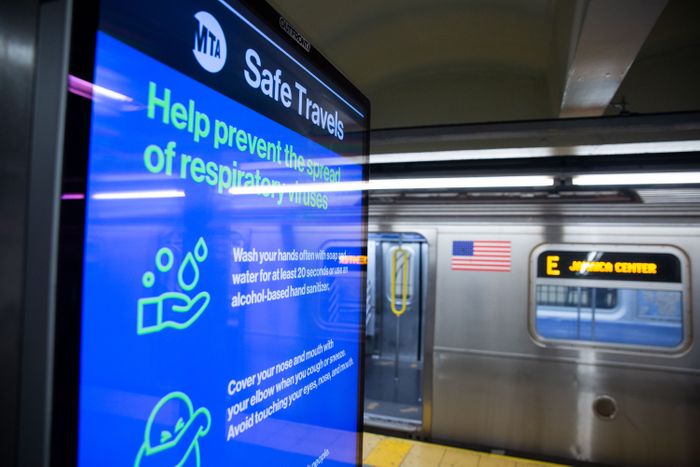By Jose Martinez, THE CITY
This article was originally published on by THE CITY
Subway taggers went on a weekend graffiti blitz, striking 24 cars on six lines, THE CITY has learned — including an M train coated in “Alice in Wonderland”-like images of a white rabbit and a Mad Hatter.
The bulk of the hits occurred during the nightly 1 a.m.-to-5 a.m. suspension of subway passenger service, a source with knowledge of the incidents said. Most took place in tunnels and along stretches of out-of-service tracks used to store trains — areas that are supposed to be patrolled by the NYPD.
Of the 183 subway-car graffiti hits this year, 153 of them — or 83% — have occurred in the so-called layup areas, according to an MTA spokesperson, while the remainder have come in subway yards secured by transit officials.

“We have a zero-tolerance policy for vandalism, which takes valuable time, resources and taxpayer dollars away from the system at a time when the MTA is facing the worst financial crisis in its history,” said Sarah Feinberg, interim president of New York City Transit.
Taggers struck trains on the 1, 6, M, G and Q lines, as well as on the 42nd Shuttle, said Aaron Donovan, an MTA spokesperson, in what transit sources described as an “unusually high” number of incidents.
Subway trains that are victims of what the MTA calls “major hits” are immediately taken out of service and sent to be scrubbed. Graffiti vandalism, a class A misdemeanor, can put a tagger in jail for up to a year. The agency also seeks restitution of train-cleaning costs from anyone caught in the act.
‘Going Back in Time’
The multi-colored hit on the M train was discovered at 4:58 a.m. Monday during a pre-service inspection near the 169th Street station in Queens, according to an internal incident report obtained by THE CITY.
With its first five cars covered in spray-painted flames, mushrooms, tags and a bare-breasted pot-smoking character with a resemblance to Betty Boop, the train was transferred to a yard for cleaning.
“This is like going back in time, for sure,” Lesya Musiyeeska, 44, an M train rider in Queens, said after seeing photos of the graffiti-coated train. “It’s not a good thing and I worry that it’s only the beginning.”
The number of graffiti incidents in stations through the end of November is slightly lower than for all of 2019, a transit source told THE CITY. The MTA did not confirm those numbers.
MTA figures show the graffiti hits in and on subway trains this year are down from 276 at this time in 2019. Overnight subway service was suspended in May, nearly two months into a pandemic that sent ridership down more than 90% at its lowest point.
Several subway underworld experts, including former taggers, told THE CITY that the graffiti is often the product of people from outside the U.S. who seek social media buzz through photos and videos of their work.
‘Enforcement Is Way Down’
Bad Guy Joe — the alias of an underground explorer who photographs tunnels and abandoned spaces around the city for LTVSquad.com — said covering a single subway car can take two to three hours.
He said the photos of the “Alice in Wonderland”-themed M train, with elaborate work covering five of the eight cars, show “a progression in confidence” among artists.
“Enforcement is obviously way down,” he told THE CITY. “Graffiti writers on a whole are way more confident than they were just three or four years ago.”
Graffiti’s presence in the subway system is still far from what it was when entire spray-painted trains became a symbol of a city in decline. In the 1970s and 80s, hundreds of millions of dollars were spent combating graffiti.
But it still surfaces.
Just after 1 a.m. Monday, four cars on the G coated in blue and black spray paint were discovered at the line’s Court Square terminal in Long Island City, Queens, leaving riders without full service during the morning rush, according to an incident report.
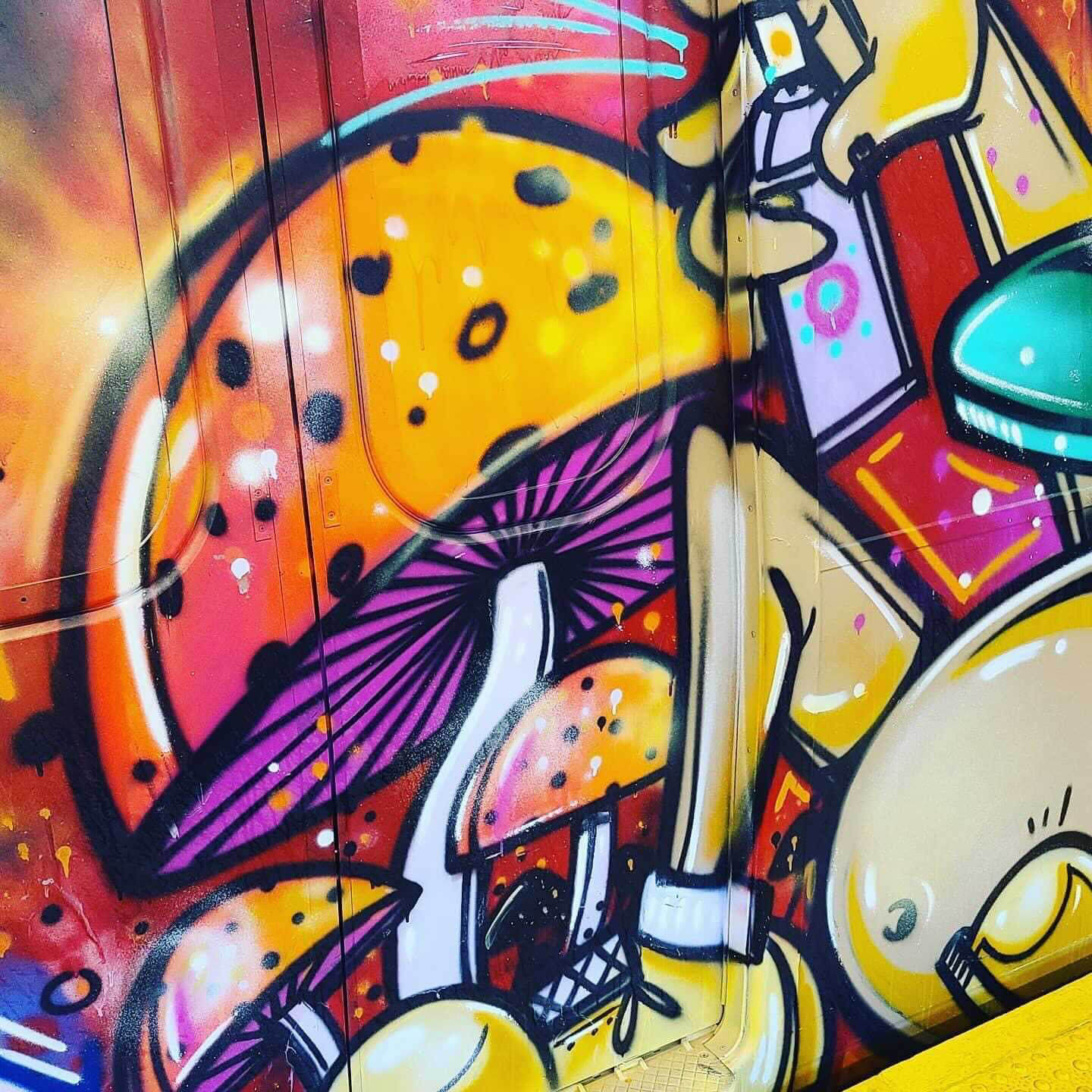
The run of graffiti and vandalism incidents come in the wake of officials at the transit agency pinning a rise in subway crime on the NYPD and what MTA Chairperson Patrick Foye has called an “inexplicable and unacceptable” decrease in the number of arrests and summonses.
NYPD figures presented to the MTA board last month show an increase from 2019 in reports in five of the six major crime categories, along with a 63% drop in subway arrests and a nearly 85% decrease in farebeating arrests.
Through the first 10 months of the year, NYPD figures show, police made 428 “theft of service” arrests, down from 2,793 in the same period in 2019.
Following multiple instances of riders being pushed onto the tracks, the NYPD last week pledged to increase police presence in the subway by transferring into the transit system 120 officers who had previously been on protests and demonstration duty.
An Around the Clock Job
Patrick Lynch, president of the Police Benevolent Association, said officers share the frustration of riders and MTA officials.
“What we’re seeing in the subway, not only in terms of vandalism but also violent crime, is a direct result of our elected leaders’ policy choices,” Lynch said in a statement to THE CITY. “They took the ‘Cops out of MTA’ slogan straight off the protest signs and ran with it.”
Riders said they have noticed a lack of police in the transit system.
“You need them on the trains and platforms,” said Leonardo Marin, 50, who was catching an M train at Middle Village-Metropolitan Avenue in Queens. “But you can go a long way in the subway before ever seeing a single police officer.”
The NYPD did not immediately comment on the graffiti incidents.
“Our cleaners work around the clock to remove the graffiti when it is found so we can keep our full fleet in service,” Feinberg said.
THE CITY is an independent, nonprofit news outlet dedicated to hard-hitting reporting that serves the people of New York.



